Venezuelan Food Dishes: Basic Overview
Common Ingredients
Common Cooking Methods
Courses
Meals
Key Taste
Eating Etiquette
Meal Presentation
Culinary Festivals
Influence and Fusion
Popular Types of Venezuelan Dishes
-
Fried dishes
In Venezuelan cuisine, fried dishes include various traditional foods where the main ingredient is often fried to perfection, resulting in a crunchy exterior and a tender interior.
Ingredients such as plantains, meats, and dough-based snacks are common in this category, with each fried dish offering a unique taste experience ranging from savory and meaty to subtly sweet.
-
Cakes and pastries
Cakes and pastries in Venezuelan cuisine are often made with various ingredients, including flour, cheeses, and sweet fillings.
Some pastries are filled with meats or cheeses, while cakes might be soaked in syrups or layered with creams, offering a plethora of textures from soft and moist to flaky and light.
-
Soups
Soups in Venezuelan cuisine feature a wide array of ingredients, from meats to vegetables and legumes, all simmered to perfection.
These soups range from light and brothy to rich and hearty, often enjoyed as a main meal or a starter.
-
Bread and doughs
From soft and fluffy to crispy and flaky, these items are made with various doughs, sometimes sweetened and often filled or topped with cheeses, meats, and sweet pastes.
They are enjoyed across all meals, serving as a staple at breakfast, complementing main dishes, or as snacks throughout the day.
Venezuelan dishes are famous culinary delights commonly savored in Venezuela, a country located at the northern tip of South America.
The cuisine of Venezuela is characterized by its variety and complexity, resulting from a blend of indigenous cooking traditions, African culinary creations, and European delicacies, such as French, Spanish, and Italian culinary masterpieces.
One of the defining aspects of Venezuelan cuisine is its emphasis on fresh, locally sourced ingredients. Staples such as corn, rice, plantains, yams, beans, and various tropical fruits form the backbone of many traditional dishes.
Meat is also prominent, including beef, pork, chicken, and a variety of seafood, especially along the coast. Venezuelan dishes often balance savory and sweet flavors, with ingredients like panela (unrefined whole cane sugar) and ripe plantains.
Spices and herbs are used moderately, allowing the natural flavors of the primary ingredients to shine through.
Cooking methods in Venezuelan cuisine vary widely, but grilling, boiling, and frying are among the most common techniques.
Dive into the vibrant world of Venezuelan cuisine with me! I’ll explore not just the top dishes but also the essence of traditional Venezuelan food, its rise to global fame, and the secrets to its health benefits.
You’ll also learn about the cultural influences shaping the flavors, the dining customs, and the perfect pairings of dishes and drinks.
Scroll down and start your flavorful journey now!
31 Popular Venezuelan Dishes with Filters
Discover 31 Venezuelan most celebrated dishes, organized by their worldwide fame. Utilize the filter feature to sift through choices by ingredients, flavors, cooking techniques, types of dishes, and dining occasions.
From traditional delicacies and beloved national dishes to innovative mixes, street food, and rare delights, there is a wide range of Venezuelan dishes that suit any taste.
Arepa
- National
- Street Food
- Traditional
Arepa is the national dish of Venezuelan cuisine, often enjoyed at any time of the day. This traditional dish is a cornmeal cake grilled, baked, or fried to achieve a crispy exterior with a soft, warm interior.
Arepas are highly customizable and filled with various ingredients such as cheese, meats, avocados, and beans. The taste of an arepa can range from the corn dough’s simple, earthy notes to its fillings’ complex flavors.
Some renowned variations include the Reina Pepiada, filled with a savory chicken and avocado salad, and the Domino, stuffed with black beans and white cheese.
Arepa is popular in various Latin American countries, particularly Colombia, where they are also considered a traditional dish.
Outside of Latin America, arepas have gained popularity in cities with significant Venezuelan and Colombian immigrant populations, such as Miami, New York, and Madrid.
Tequeños
- Street Food
Tequeños are a popular Venezuelan snack or appetizer known as a party staple and street food favorite. They consist of a strip of white cheese wrapped in a thin wheat flour dough and then fried until golden and crispy.
While the traditional cheese-filled tequeños are the most common, there are innovative variations that include fillings like chocolate, guava, and even meat.
The salty and savory flavor of the classic cheese tequeños makes them a perfect companion to sweet dipping sauces, such as guava sauce or cane syrups.
Their popularity has spread to other Latin American countries and areas with substantial Venezuelan expatriate communities. In countries like Peru, tequeños have been adopted into local cuisine, with variations that include fillings like sausage or ham.
Empanada
- Street Food
Empanadas, a staple of Venezuelan cuisine, are delightful fried or baked pastries filled with various savory ingredients.
Commonly enjoyed as street food, empanadas come with various fillings, with some of the most popular variations including shredded beef, black beans with cheese, and chicken.
The taste of an empanada is as diverse as its fillings, ranging from the hearty and meaty to the light and cheesy.
Cachapa
- Street Food
- Traditional
Cachapa is a beloved traditional Venezuelan dish reminiscent of a corn pancake, known for its sweet and savory flavor. This dish is made from tender, fresh corn batter and is often griddled to achieve a delightful contrast of a soft interior and a slightly crispy exterior.
Cachapas are typically served with a generous portion of queso de mano (a soft, white cheese). While cachapas can be enjoyed throughout the year, they hold a special place during local festivals and country fairs.
Pabellón Criollo
- National
Pabellón criollo is a comforting platter, typically consisting of shredded beef, black beans, rice, and fried plantains. As a traditional meal, pabellón criollo is considered the national dish of Venezuela.
The dish combines the savory taste of beef, the sweetness of plantains, and the earthiness of black beans. This dish is enjoyed throughout the year and particularly cherished during significant events and family gatherings.
While it holds a place of pride within Venezuelan cuisine, its popularity internationally is closely tied to Venezuelan diaspora communities.
Tostones
- Street Food
Tostones, also known as patacones, are a popular side dish or snack in Venezuelan cuisine, known for their crispy texture and savory taste. These twice-fried green plantain slices are a testament to the simplicity and flavor of traditional street food.
Tostones are often enjoyed with a sprinkle of salt or accompanied by various dipping sauces, such as garlic sauce or a creamy avocado-based dip.
The crisp exterior and soft interior make tostones an irresistible treat in many Venezuelan homes and street food stalls, especially during local festivals and casual gatherings.
Hallaca
- Traditional
Hallaca is a quintessential Venezuelan dish that is central to the country’s Christmas celebrations. This elaborate dish consists of a corn dough filled with beef, pork, and chicken stew, adorned with raisins, capers, and olives, all wrapped in banana leaves.
The taste of hallaca is a complex harmony of savory meats, sweet raisins, and tangy capers, encapsulated in the soft, maize-flavored dough.
Pan de Jamón
- Traditional
Pan de Jamón, directly translating to “ham bread,” is a Venezuelan savory bread rolled into a log, enveloping slices of ham, raisins, and green olives.
The bread’s dough is slightly sweet, which perfectly complements the salty ham and the tangy bite of the olives, creating a delightful balance of flavors.
Pan de Jamón is more than just food; it’s a symbol of Venezuelan Christmas, shared among families and friends to celebrate the warmth and joy of the season.
Pasticho
- Fusion
Pasticho, often likened to Italian lasagna, is a cherished dish in Venezuelan cuisine known for its layers of pasta, meat sauce, béchamel sauce, and cheese. This dish is a beautiful fusion of Italian and Venezuelan culinary traditions.
Each layer of pasticho contributes to its rich and comforting taste, with the creamy béchamel and cheese offering a smooth contrast to the hearty meat sauce.
Asado Negro
- Traditional
Asado negro stands out as a traditional Venezuelan dish, renowned for its dark, caramelized exterior and tender, flavorful interior.
This dish typically involves a cut of beef, such as eye round, which is marinated and then slow-cooked in a rich sauce made from caramelized sugar, onions, and various seasonings.
The result is a savory dish with a slight sweetness, characterized by its distinctive dark color and melt-in-your-mouth texture.
Asado Negro is often served with white rice and fried plantains and is frequently prepared for family gatherings and festive occasions.
Sancocho
- Traditional
Sancocho is a heartwarming and hearty soup famous across various Latin American countries. In Venezuela, it takes on a local flair with its unique blend of ingredients, including meats like chicken, beef, or fish, combined with an array of root vegetables and corn.
Each region in Venezuela boasts its variation of sancocho, such as Sancocho de Gallina (hen stew) or Sancocho Trifásico, which includes multiple types of meat.
The taste of sancocho is deeply savory, enriched by the slow simmering of ingredients. Often associated with family gatherings and festive occasions, sancocho is a dish that brings people together.
Quesillo
- Fusion
- Traditional
Quesillo, akin to what many would recognize as flan, is a beloved dessert in Venezuelan cuisine, celebrated for its smooth, caramelized texture and sweet, creamy flavor.
Due to its appearance, this traditional custard dessert is often mistaken for its namesake, a type of cheese.
Quesillo is typically prepared with a simple mixture of eggs, condensed milk, and caramel, and it’s distinguished by the presence of small holes throughout, resembling a cheese, hence its name.
It’s a common sight at celebrations and family dinners, especially during birthdays and holidays.
Cazón en Coco
- Exotic
- Traditional
Cazón en coco is a traditional Venezuelan dish consisting of tender, shredded baby shark, known locally as ‘cazón,’ that is gently cooked in a sumptuous coconut milk sauce.
Combining the coconut’s sweetness with the distinct, slightly salty taste of the cazón creates a delightful contrast that’s hard to forget. It’s a traditional dish often savored in coastal regions, where seafood is a staple.
Chupe Andino
- Traditional
Chupe andino is a hearty and traditional soup from the Andean region of Venezuela, a comforting blend of chicken, potatoes, cheese, and corn, often thickened with cream.
Its taste is rich and creamy, with a comforting warmth that makes it particularly popular in the cooler mountainous areas. This soup is especially popular during cold evenings or family gatherings.
Bienmesabe
- Traditional
Bienmesabe, a dessert that translates to “tastes good to me,” is a tasty Venezuelan treat. This coconut and rum-flavored creamy cake is a traditional dessert, often layered with sponge cake soaked in a sweet syrup, then topped with meringue.
The flavor is a heavenly blend of sweetness from the coconut and a kick from the rum. While there are variations, such as adding fruit toppings or chocolate, the essence of bienmesabe remains its creamy coconut base.
This dessert is a favorite at celebrations and family gatherings. It’s like a sweet hug at the end of a meal, promising comfort and joy.
Mondongo
- Traditional
Mondongo is a robust and flavorful soup made with finely diced tripe and an assortment of vegetables like bell peppers, onions, carrots, and cabbage, simmered to perfection with spices and herbs.
This dish is a traditional Venezuelan comfort food known for its hearty and warming qualities. The taste of Mondongo is rich and complex, with the tripe offering a unique texture and the broth carrying depth from the blend of vegetables and seasonings.
Golfeados
- Street Food
- Traditional
Golfeados is a sweet and savory twist on traditional Venezuelan pastries, akin to a roll swirled with sugarcane syrup and filled with salty cheese.
This juxtaposition of flavors makes golfeados a unique and beloved snack, often enjoyed in the afternoon with coffee or at any time as a treat.
Some variations include adding guava paste or sprinkling sesame seeds on top for an extra crunch.
Ensalada de Gallina
- Traditional
Ensalada de gallina, literally translating to “hen salad,” is a traditional Venezuelan dish that plays a central role in holiday festivities, particularly Christmas.
This rich and creamy chicken salad blends tender chicken breast with potatoes, carrots, peas, and mayonnaise, garnished with a touch of green apple for a slight sweetness and added crunch.
Ensalada de gallina is a holiday tradition that brings families together with each shared bite, embodying the spirit of Venezuelan Christmas celebrations.
Chicharrón
- Street Food
- Traditional
Chicharrón, a beloved snack in Venezuelan cuisine, is essentially fried pork belly or pork rinds. Known for its crispy texture and rich flavor, it’s an everyday street food delight many nationwide enjoy.
Variations of chicharrón can include pieces with or without meat, and sometimes, it’s even incorporated into other dishes for added crunch and flavor.
The taste of chicharrón is predominantly savory with a satisfying fatty richness, making it a popular choice for casual snacking or as a side dish.
Dulce De Leche
- Traditional
Dulce de leche, also known as “arequipe” in some regions, is a sweet, caramel-like spread or sauce made by slowly heating sweetened milk. This indulgence is widespread across Latin America, with Venezuela boasting its cherished version.
It’s incredibly versatile, finding its way into various desserts and pastries or simply enjoyed on its own. There are numerous variations, including ones with added flavors like chocolate or vanilla.
The taste is characteristically sweet, creamy, and rich. In Venezuelan cuisine, it often graces the tables during celebrations and special occasions, adding a touch of sweetness to the festivities.
Torta Negra
- Traditional
Torta Negra is a rich, dark cake deeply rooted in Venezuelan tradition. This dessert is typically savored during significant occasions such as weddings and Christmas.
Infused with various dried fruits and nuts, which have been soaked in rum or wine, the cake offers a moist, dense texture and a complex, deeply satisfying taste.
Pisca Andina
- Traditional
Pisca andina is a comforting soup hailing from the Venezuelan Andes. This traditional dish combines potatoes, chicken, corn, and cilantro, creating a warm and nourishing meal that’s particularly favored in the cooler highland climate.
With each spoonful, one can taste the earthy potatoes, the savory chicken, and the freshness of cilantro, all coming together in a harmonious blend.
Pisca andina is not just a dish; it’s a bowl of warmth that brings families together, especially during the morning hours, setting a tone of communal comfort for the day ahead.
Perico
- Traditional
Perico is a traditional Venezuelan scrambled egg dish enriched with tomatoes, onions, and bell peppers, offering a savory flavor with a touch of vegetable sweetness.
It’s commonly served in arepas or with breakfast sides, making it a staple of Venezuelan breakfasts.
Cachito
- Fusion
- Traditional
Cachito is a popular Venezuelan bakery delight, often savored as a breakfast or snack item. It’s akin to a croissant, stuffed with ham, making it a delightful fusion of European pastry techniques with Venezuelan flavors.
The dough is slightly sweet, which pairs wonderfully with the savory ham filling, creating a satisfying and indulgent balance.
Catalina
- Traditional
Catalina, a traditional Venezuelan sweet, is a bread made from corn flour, panela (unrefined whole cane sugar), and spices, giving it a unique, molasses-like sweetness with subtle hints of warming spices.
The dense yet tender texture offers a comforting, mildly sweet flavor profile. Catalinas are often enjoyed as a snack or dessert, sometimes with cheese or a hot beverage.
Patacon Zuliano
- Street Food
- Traditional
Patacon zuliano is a celebrated street food dish from the Zulia region of Venezuela, known for its inventive use of green plantains.
In this dish, fried green plantains take the place of bread, sandwiching a hearty filling of shredded beef, chicken, or pork, along with cheese, lettuce, tomatoes, and a variety of sauces.
The taste is a delightful interplay of the crispy, slightly starchy plantains with the savory, juicy filling, creating a festival of textures and flavors in each bite.
Bollo Pelón
- Traditional
Bollo pelón is a traditional Venezuelan dish consisting of corn dough balls filled with a savory mixture, most commonly seasoned ground beef, and then steamed to perfection within corn husks.
The result is a moist, tender cornmeal exterior giving way to a hearty, flavorful center. Bollo pelón is particularly popular in the western regions of Venezuela.
Fosforera
- Traditional
Fosforera, often hailed as the Venezuelan seafood chowder, is a vibrant, rich broth brimming with a variety of seafood, such as fish, shrimp, crab, and mollusks, seasoned with a blend of local herbs and spices.
The taste of Fosforera is complex and hearty, with the freshness of the seafood complemented by the aromatic depth of the broth.
Mandoca
- Street Food
- Traditional
Mandoca is a traditional Venezuelan dish, often enjoyed as a beloved snack or breakfast item. This treat is crafted from a dough that combines corn flour, ripe plantains, and sometimes a hint of cheese, which is then deep-fried to achieve a satisfying crunch.
Mandocas are commonly shaped into rings or spirals, adding a playful touch to their presentation. Their taste is a captivating blend of sweet and savory, a characteristic that makes them irresistible to many.
Paledonias
- Traditional
Paledonias, also known to some as “negritos,” stands as a cherished confection within Venezuelan cuisine.
These soft, dense cakes are made from a base of unrefined whole cane sugar, known locally as “papelón,” combined with flour, and flavored with spices such as cinnamon and cloves, contributing to their distinctively rich and molasses-like taste.
Paledonias are often associated with the cooler, rainy season and can be found in various parts of Venezuela, enjoyed as a comforting treat.
Polvorosas
- Traditional
Polvorosas are a traditional Venezuelan treat, savored for their crumbly texture and sweet, buttery flavor. These cookies are a staple of Venezuelan homes, especially enjoyed with a cup of coffee or hot chocolate.
Made with a simple mixture of flour, butter, sugar, and often a hint of vanilla or lemon zest, polvorosas melts delightfully in your mouth, leaving a sweet and comforting aftertaste.
Which Influences Shape Venezuelan Dishes?
Venezuelan cuisine is a rich tapestry woven from European, West African, and indigenous influences, each contributing distinct flavors and traditions.
Understanding this mosaic of culinary influences sets the stage for appreciating the dining etiquette in Venezuela, where meals are more than just food; they celebrate culture and community.
What Is Venezuelan Dining Etiquette?
Navigating Venezuelan dining etiquette involves understanding and appreciating a mix of traditional Latin American practices and unique local manners. Here’s a breakdown of key aspects to remember:
Next, let’s discover the perfect pairing of beverages that enhance the country’s diverse cuisine flavors.
Which Beverages Best Complement Venezuelan Dishes?
Consider beverages that can either contrast with or enhance these complex flavors to complement Venezuelan dishes. Here are some suggestions:
When choosing suitable Venezuelan beverages to accompany dishes, consider the balance of flavors in the meal and select a drink that will either complement or provide a pleasant contrast to those flavors.
So, have you discovered your favorite Venezuelan dish yet? Share your thoughts in the comments, and don’t forget to like this post if you enjoyed it. Thank you!


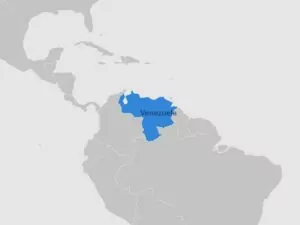

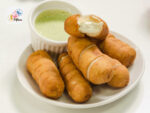
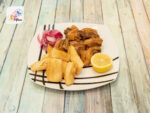

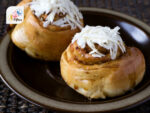
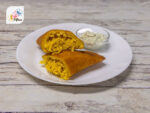
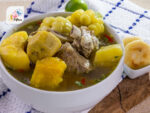
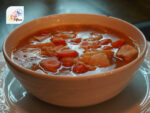
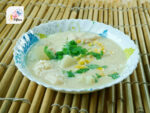



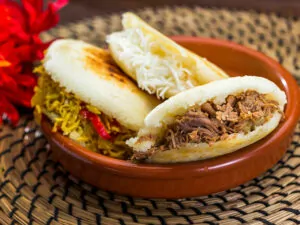
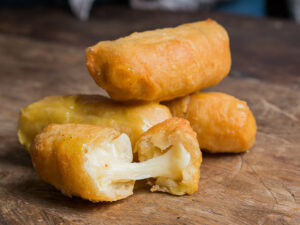
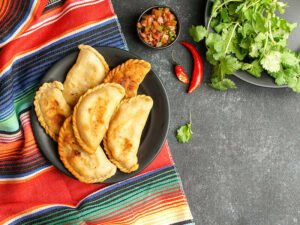
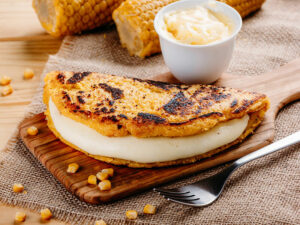
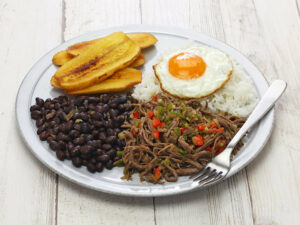
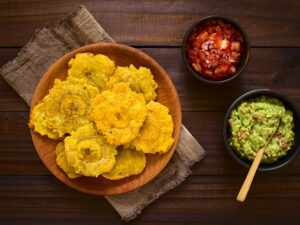
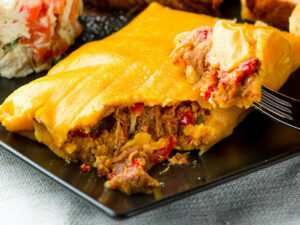

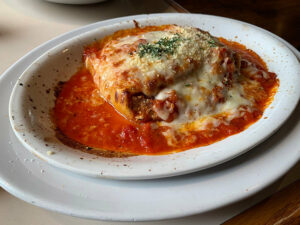
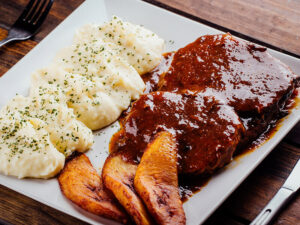
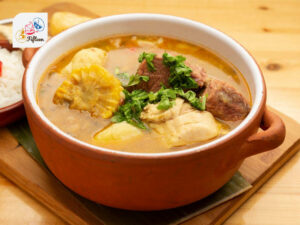
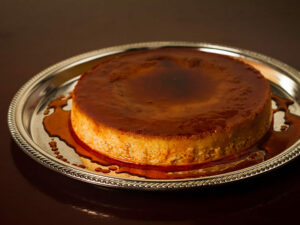
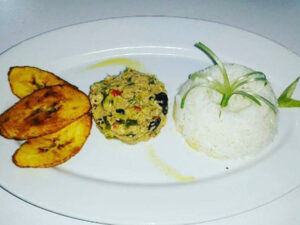
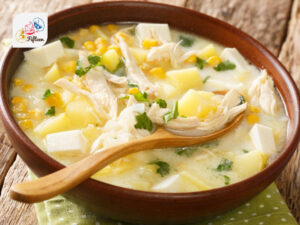

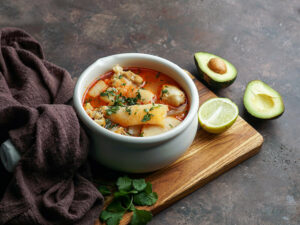
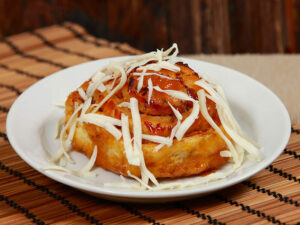
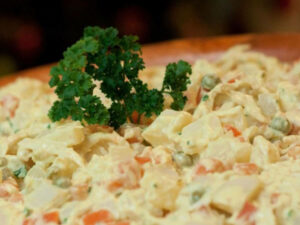
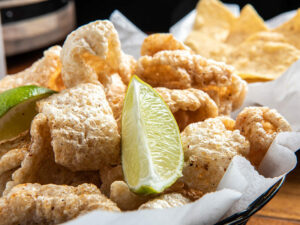


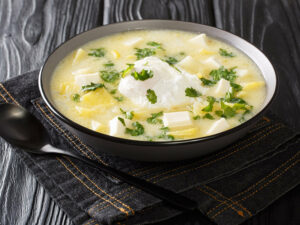
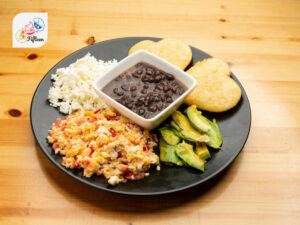

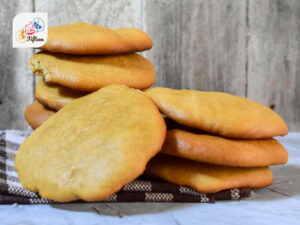
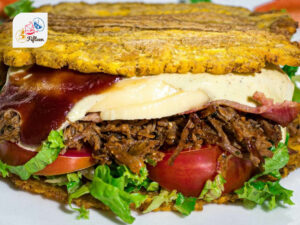
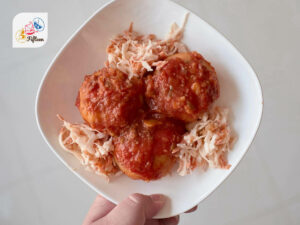
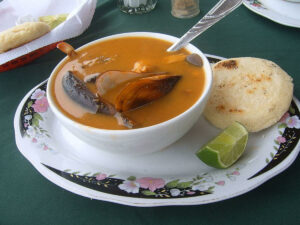
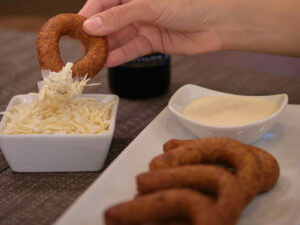


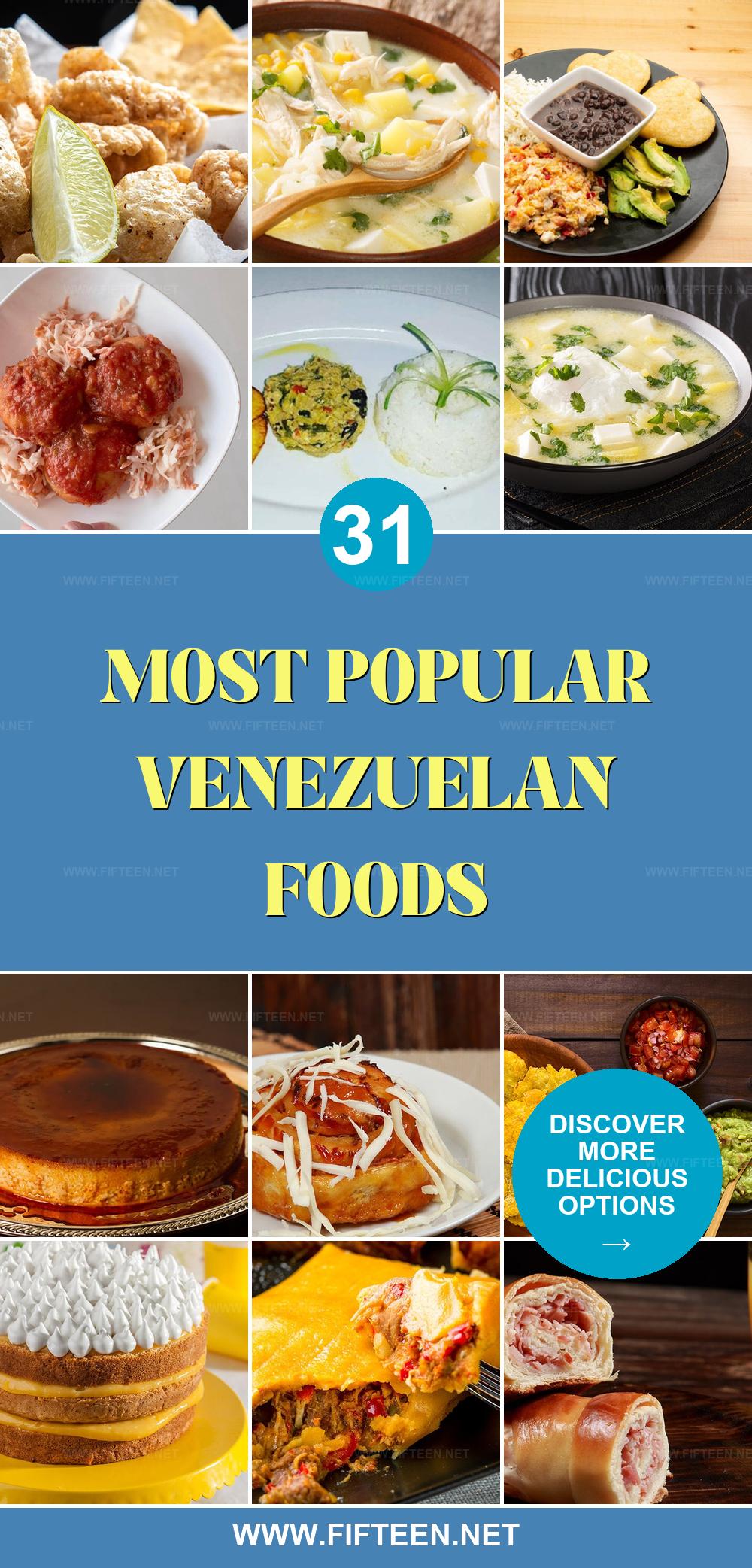
Jamie Scott
Editor in Chief, Senior Content Writer
Expertise
Home Cooking, Meal Planning, Recipe Development, Baking and Pastry, Food Editor, Cooking-video Maker, Western Food Evaluation Expert
Education
Le Cordon Bleu College of Culinary Arts
Local Community College, New York, NY
Jamie Scott is a skilled culinary expert and content creator specializing in Western cuisine. With over 15 years in the culinary field and formal training from Le Cordon Bleu, Paris, Jamie deeply understands how to blend nutrition with delicious flavors. His passion for cooking matches his commitment to making healthy eating accessible and enjoyable.
On Fifteen.net, Jamie brings a fresh perspective to classic dishes and beverages, offering readers insightful recipes, cooking tips, and a fresh view on meal planning that emphasizes taste, health, and simplicity.